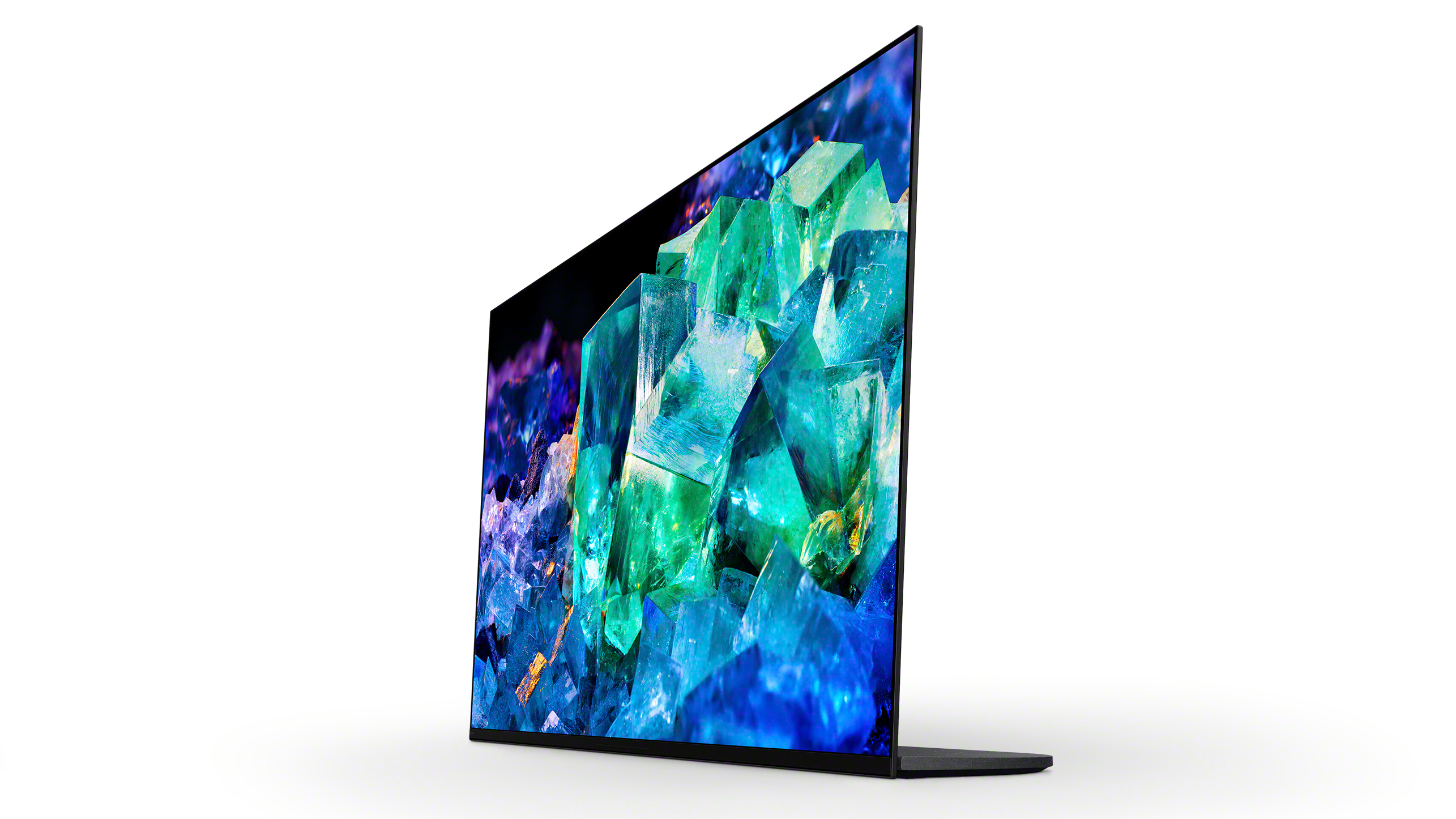Sony announces the first QD-OLED TV of CES 2022

The next big innovation in TVs has officially arrived: Sony has announced the Sony Master Series A95K, the first-ever commercial QD-OLED TV, at CES 2022.
The A95K is Sony’s only QD-OLED model coming to store shelves in 2022, but Sony says it will boast 200% the color saturation of a normal LED-LCD TV with wider viewing angles and better black levels.
Additionally, thanks to the Sony XR Cognitive Processor and a revolutionary new heat dissipation system, the A95K will be able to control contrast and maximize brightness better than before - giving it a huge advantage over traditional OLED screens.
In terms of ports, the A95K will have two full-spec HDMI 2.1 ports that can do 4K/120, VRR and ALLM, however one of those will also be eARC, meaning you might have to choose between adding a soundbar and keeping both the PS5 and Xbox Series X hooked up.
The Sony A95K will also come bundled with the new Bravia Cam, also announced at CES 2022. The additional piece of hardware will enable the A95K to track where you’re sitting to optimize audio output for that location, and allows you to use gesture control for playback.
For anyone with kids, the Bravia Cam allows you to set proximity alerts to tell little ones that they’re sitting too close to the screen, and an auto power saving feature that will turn off the screen if you walk out of the room for more than a few minutes.
There’s no pricing or firm release date for the Sony Master Series A95K, but it’s one of the most interesting new TVs shown off at CES and we’ll be following it closely.
Sign up for breaking news, reviews, opinion, top tech deals, and more.
Sony A95K QD-OLED photo gallery














Sony comes in strong with mini-LEDs, OLED TVs and new flagship LED-LCD screens
While the QD-OLED is the most interesting of Sony’s new 2022 TV catalog, it’s far from being the only new model in the lineup as Sony has also announced its first two mini-LED TVs alongside two new OLED and a new LED-LCD screen.
The most premium of the bunch are the new Z9K and X95K series that use mini-LED powered by the Backlight Master Drive technology we saw a few years ago in the Sony Z9D. That said, with the ability to control even smaller patches of mini-LEDs, Sony says that the Z9K and X95K have some of the best contrast control of any LED-LCD TV with higher peak luminance and less blooming.
Next down the line are the two new OLED screens, the A90K and A80K that use temperature distribution mapping and a new OLED panel for higher peak luminance. Both OLEDs have two HDMI 2.1 ports for 4K/120 like the A95K, and also share the same caveat that HDMI 3 is also eARC ready.
Last but not least is the new Sony X90K that will fill out the ranks as the most affordable mid-range model, likely similar in price to last year’s Sony X90J 4K LED-LCD TV.

Analysis: Is this the first and only QD-OLED we’ll see at CES?
Chances are good that Samsung could have a QD-OLED to show off at some point during the convention - potentially mere hours after this story goes live - but so far one hasn't appeared yet.
Last year, we reported that Samsung was purchasing a number of OLED panels from LG Display, and it seems like those will be used at some point for QD-OLED screens. That being said, Sony had a steady flow of OLED screens coming in from LG Display, which could have allowed the company to assemble a QD-OLED before other manufacturers.
We’ll keep an eye out for more QD-OLED screens (as well as mini-LEDs, MicroLEDs, ULEDs, QLEDs and regular ol’ OLEDs) as the show progresses, and we’ll be excited to get them in our own homes for testing later this year.
- Check out all of TechRadar's CES 2022 coverage. We're bringing you all the breaking tech news and launches, everything from 8K TVs and foldable displays to new phones, laptops and smart home gadgets.

Nick Pino is Managing Editor, TV and AV for TechRadar's sister site, Tom's Guide. Previously, he was the Senior Editor of Home Entertainment at TechRadar, covering TVs, headphones, speakers, video games, VR and streaming devices. He's also written for GamesRadar+, Official Xbox Magazine, PC Gamer and other outlets over the last decade, and he has a degree in computer science he's not using if anyone wants it.